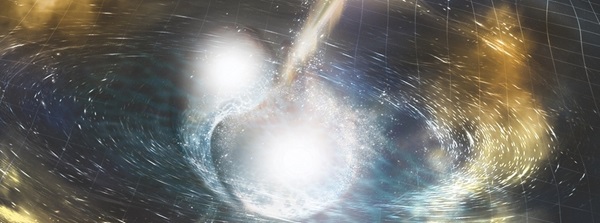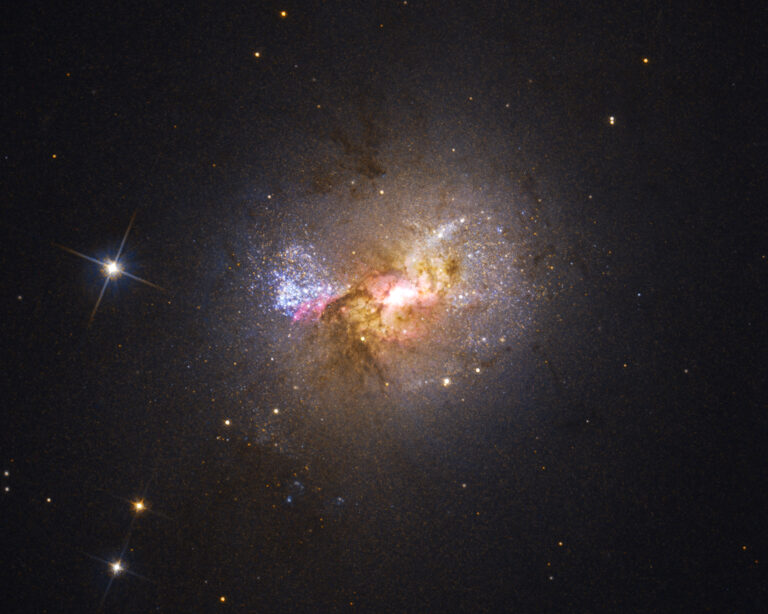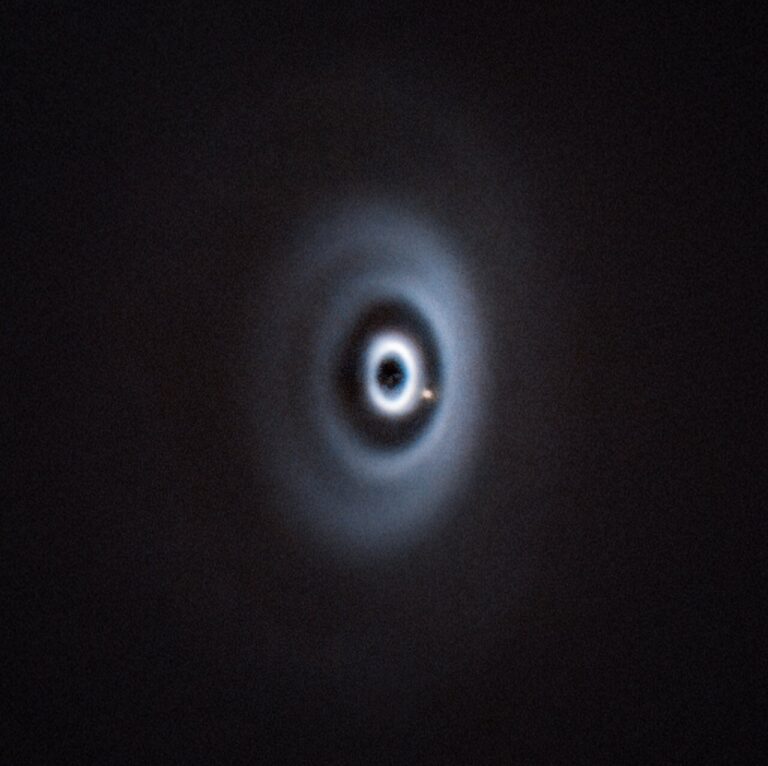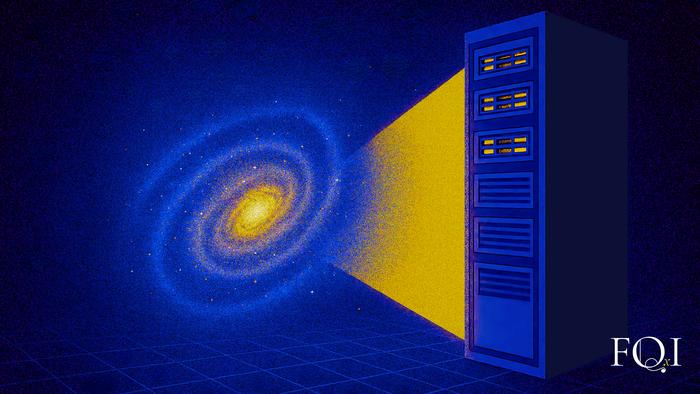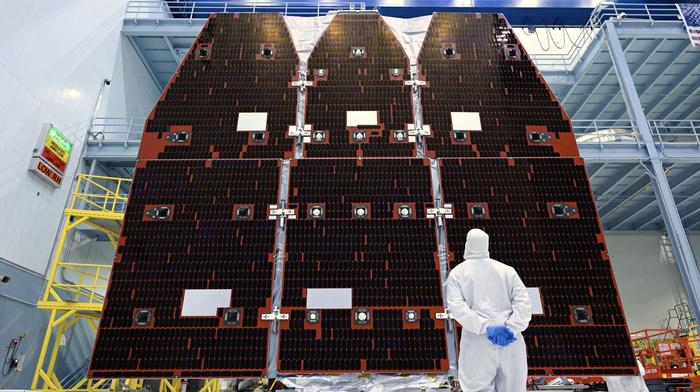Key Takeaways:
This may seem like the cry of a panicking news reporter in a lurid sci-fi tale, but it’s actually a scientific fact — albeit a slightly hyperbolic one.
Mysterious cosmic rays traveling at speeds approaching that of light constantly pelt Earth’s upper atmosphere from the depths of space, creating high-energy collisions that dwarf those produced in even the most powerful particle colliders. The atmospheric crashes rain down gigantic showers of secondary particles to the surface of our planet.
But despite being discovered more than a century ago, physicists still don’t know where cosmic rays come from.
“The short answer to why we can’t trace cosmic rays back to their source: magnetic fields,” Julia Tjus, professor at the School of Physics and Astronomy at Ruhr University in Bochum, Germany, tells Astronomy. She explains that charged cosmic-ray particles are redirected by the magnetic fields they pass through on their long journey through space. “As magnetic fields in space have local, small, randomly oriented structures, a prediction of the exact path of a cosmic-ray particle is impossible,” she says.
“It’s as if it wandered through the universe like a ball in a pinball machine.”
This doesn’t mean that we are completely in the dark about these tiny space bullets, though.
What are cosmic rays?
One thing we certainly do know about cosmic rays is that they are comprised of extremely energetic charged particles — like protons, alpha particles, and atomic nuclei like helium and iron, with miniscule proportions of antiparticles thrown into the mix.
It’s hard to imagine just how shocking the discovery of cosmic rays must have been to physicists in the early 1900s. The energies of these particles were monumental in comparison to those of every other particle they had observed until that point. For example, the average energy of a solar photon is approximately 1.4 electron volts (eV). For reference, a flying mosquito has an energy of about 1 trillion eV, or 1×1012 eV, but a mosquito is also much, much larger than a single particle. Meanwhile, an alpha particle emitted during the decay of Uranium-238 possess 4.27×10⁶ eV of energy.
Compare that to a cosmic ray proton, which has an energy of some 1×10²⁰ eV.
“Imagine a proton that is accelerated so that it has an energy of 100 Joule,” Says Tjus, whose recent paper explains how new developments in astronomy could help trace the origins of cosmic rays. “This energy corresponds to that of a tennis ball smashed by someone like Raphael Nadal with a velocity of around 200 kilometers [124 miles] per hour. Only, the tennis ball 10²⁹ times heavier than the proton.
“That means a proton can only reach [that] extreme, macroscopic energy by travelling at almost the speed of light. The universe must be able to accelerate particles to these energies, but we still do not know how it does it.”
The unusual suspects
We know that the processes that accelerate cosmic rays to such astounding energies must result from powerful and violent events, which considerably narrows down possible sources.
“One of the best ways of accelerating particles is a shock front [that occurs] when a medium with a large velocity runs into a slower one, producing a shock— a sudden change in the properties of the medium,” Tjus explains. “In the case of the universe, the changed properties are velocity and density, and even magnetic fields. Luckily for the cosmic rays, the field becomes highly turbulent in that process. And the combination of a shock front with turbulence is a great particle accelerator.”
But what could produce such a shock front? One likely suspect is supernovae. As a shell of shocked material blasted away from an exploding star, it hits the cool interstellar medium that lies between stars, almost like a cosmic tsunami. The phenomena of a travelling shock front can also be found in active galaxies, where huge plasma jet exist. Tjus says: “This is one of the main reasons why supernova remnants and active galaxies are the most promising candidates for cosmic-ray acceleration.”
For this reason, better understanding cosmic rays, as well as their origins, is expected to open an important window into tremendously powerful and awe-inspiring cosmic events, such as supernovae and collisions between black holes and neutron stars.
It is perhaps ironic, however, that science’s figurative journey to discover the source of high-energy particles from space began in the upper atmosphere, and has since moved deep underground.
Bringing cosmic rays down to Earth
That’s not what Hess found.
Hess discovered something startling. At a nosebleed-inducing altitude of 3.3 miles (5.3 km), ionization rates of the air were three times that measured at sea level. He concluded that the source of this ionization was not coming from below our feet, but instead from above. Further measurements made during a solar eclipse also showed the Sun wasn’t the source of this ionization radiation.
During the course of seven balloon trips, Hess discovered cosmic rays — confirmed and named by Robert Millikan in 1925 — coming from beyond our solar system. But, while the detection of cosmic rays has been associated with balloon flights ever since, the upper atmosphere isn’t the most convenient laboratory to investigate the high-energy particle collisions they produce.
To study the collisions caused by cosmic rays, particle physicists retreated below ground, employing increasingly monstrous particle accelerators to slam together particles in an attempt to replicate the collisions that cosmic rays spark in the upper atmosphere. This quest has culminated with CERN’s Large Hadron Collider (LHC) with a 16-mile (26 km) circumference deep beneath the French/Swiss border. Yet, despite its impressive size, power and utility, the LHC still can’t reach the energies produced by cosmic ray collisions.
Multi-messenger astronomy: The future of cosmic ray research
At roughly the same time a thrilling balloon ride changed our perspective of the universe forever, a physicist named Einstein was working on a wild theory that would radically change our understanding of the fabric of space-time. And this theory, many decades later, could provide the next step to decoding cosmic rays.
The discovery of gravitational waves — ripples in space-time predicted by Einstein’s theory of general relativity — has made a new form of astronomy possible, allowing us to investigate events and objects that we could never hope to observe in the electromagnetic spectrum alone.
This combination of electromagnetic or “traditional” astronomy and gravitational-wave detections (along with detecting neutrinos, which are ghost-like particles with virtually no mass or electric charge) is known as multi-messenger astronomy. And it has a significant role to play in future investigations of cosmic rays, and, by extension, the high-energy universe.
The gravitational-wave signal GW170817 came from the merger of two neutron stars and was observed in 2017. It was significant for both multi-messenger astronomy and identifying potential sources of cosmic rays. Not only did this violent merger become the first such event to be detected in both gravitational waves and electromagnetic radiation, but it also confirmed that the merger of compact stellar remnants can accelerate particles to great speeds, creating cosmic rays.
“I have started to work on the connection of neutrino emission and gravitational waves in the past year,” Tjus says. “This is a lot of fun and promises a long-term gain in the understanding of not only the merger of neutron stars, but also supermassive binary black holes that can represent the core of many active galaxies.”
“There is no other way than multi-messenger astronomy to understand the origin and impact of cosmic rays. Cosmic rays alone cannot give an answer, neither can gamma-rays or neutrinos for themselves,” Tjus says. “All three messengers have unique properties and show different parts of a big puzzle. Only by putting together all the pieces, [can we] see the full picture.
“I hope we can answer the question of the origin of cosmic rays within the next decade. This sounds like a long time, but given the fact that cosmic rays were discovered in 1912, 10 years does not seem too long actually.”




